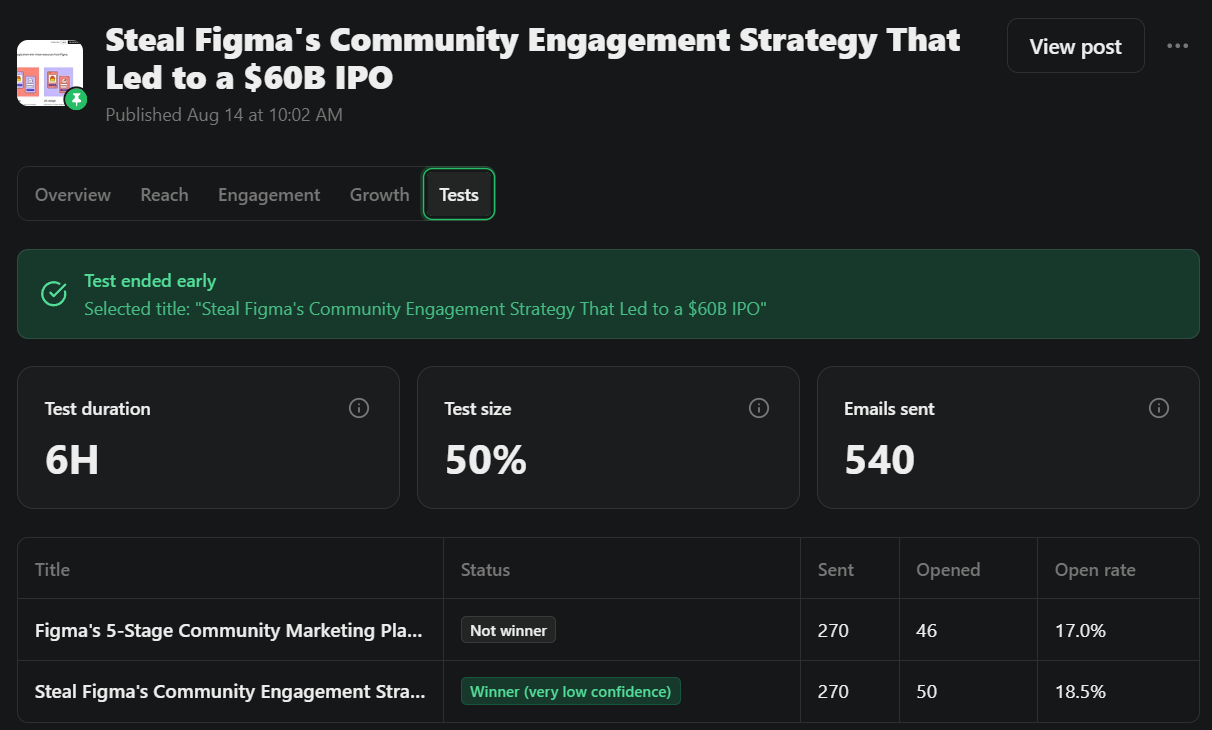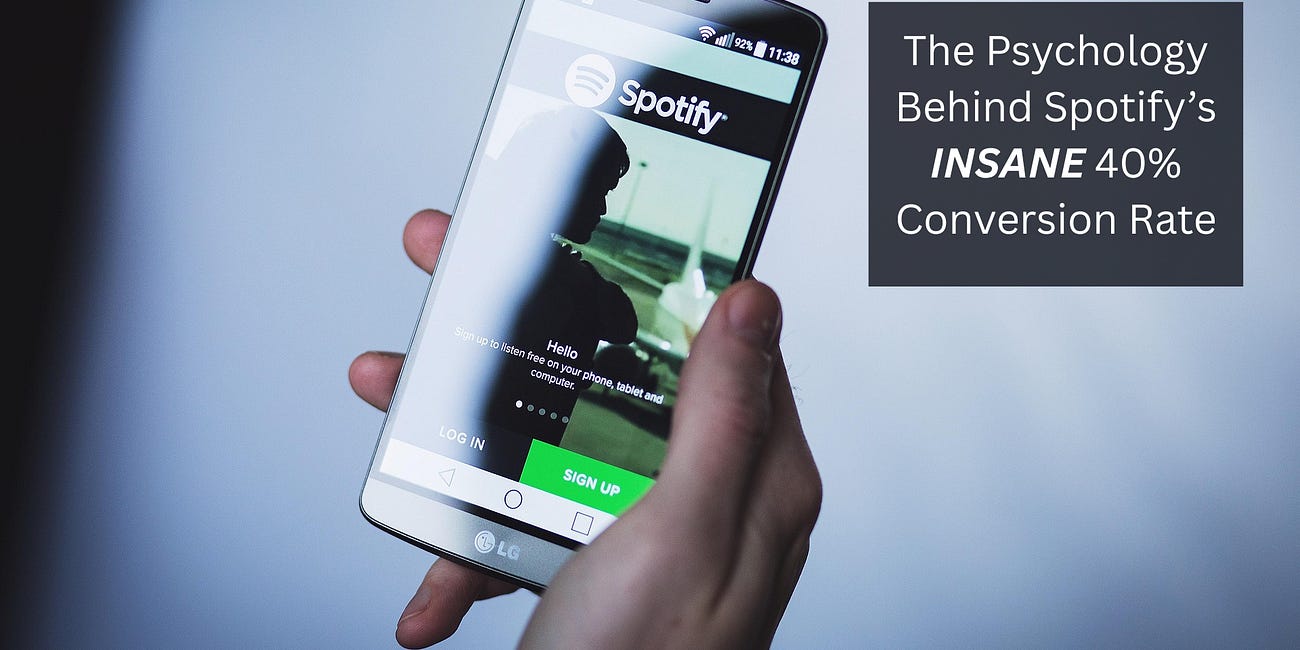The Next 51 Seconds Will Decide If You Keep That Reader, or Lose Them Forever
But the first 5 seconds are even more critical...

For over 20 years, I've worked with Fortune 500 companies and startups to help them build better customer engagement, acquisition and retention strategies. Every issue of Backstage Pass pulls back the curtain and shares what I've learned, and teaches you how to apply these same concepts to grow your own Substack into a sustainable business.
The average reader spends 51 seconds reading a newsletter, according to research by The Nielsen Norman Group. Let’s break down the reader’s behavior throughout those 51 seconds, and determine how we can change their behavior to convince the reader to stay, instead of leaving forever.
You Have 46 Seconds Left…
During the first 5 seconds that the reader arrives on your newsletter, they are quickly scanning. They will look at your headline, does it immediately grab their attention? Recently, Substack added A/B headline testing. It’s a very useful feature that you should be taking advantage of as often as possible. A compelling headline immediately grabs attention and converts a passive scroller into an active reader.
The biggest mistake writers make in crafting headlines is to simply summarize the topic of the article. I could have wrote “The behavior of the average reader upon viewing your newsletter” as this article’s headline. That summarizes the topic, but it’s very boring. I almost fell asleep just writing that.
But choosing “The Next 51 Seconds Will Decide If You Keep That Reader or Lose Them Forever” as the headline creates a sense of urgency and excitement. It’s the same topic, but by creating a more compelling headline, I have increased the chance that the average person scrolling their Substack feed will click the link and read the article.
Once they arrive, they continue scanning for those first few seconds. Past the headline, they are also looking for visual cues. Your branding counts, but I think moreso, the visual elements of the article itself. This is why it’s important to have a strong, eye-catching photo (or two) that marries to your article. You want to pick visuals that pop and draw interest, while also being relevant to the topic at hand. It’s a bit of an art, to be honest.
You Stop the Clock If: Your headline and opening visual gives them a reason to pause. When someone first engages with your content, let’s assume its not even the article they are reading yet, but simply the headline and visual they see passing by in their feed. So your initial headline and visual will be the first thing that grabs their attention. Or a Note if you add one. At minimum, the first 5 seconds needs to give them a reason to slow down, and actually CONSIDER your article and if it is worth their time. So you need to crush your headline and visual elements.
You Have 36 Seconds Left…
After the first 5 seconds spent scanning the headline and visual elements of your article, then the reader switches gears. Now, the reader starts scanning the layout of the post itself.
This is where your subheadings need to shine. Your subheadings provide additional cues to the reader as to the articles topic. It helps them decide how you will cover the topic, and if you will be addressing areas that the reader finds to be interesting.
Having said that, the subheadings I am using for this article really don’t follow the ‘best practices’ for writing compelling subheadings. These subheadings are designed to help the reader (you) feel a sense of urgency as you read the article to understand that you truly do have less than a minute to capture the reader’s attention and convert them into a subscriber. So the subheadings I am using, focusing on a countdown, are designed to tie into the theme of the article, but they are also a bit of a roll of the dice. Hey, sometimes you have to try something different!
You Stop the Clock If: Your subheadings and article structure is clear, and compelling to the reader. Subheadings help the reader better understand what the article is about. Again, the subheadings I am using for this post are different from most. Typically, subheadings are used to break down a larger topic into smaller chunks. The reader can quickly scan the article, see the subheadings, and get a better understanding of the subtopics covered. My approach with the subheadings is to be more story-driven, each subheading relates to a countdown and creating a sense of urgency for the creator to act in a certain way in order to ‘stop the clock’. You want to create clear, and compelling subheadings that give greater structure to your article, and that also better advise the reader on the actual content of your article. At this point, if the reader found your headline and visuals interesting, then they also found your subheadings compelling, then there is a very good chance they will commit to read your article at this point. If not, the clock continues to countdown…

You Have 26 Seconds Left…
At this point, if the reader hasn’t committed to reading your article, their behavior switches from scanning to skimming. At this point, the reader hasn’t seen enough to convince them to stay, so they begin to look for any content that has value. They will be jumping around a bit more. They may ignore the first part of the article, and light on the 3rd subheading that focuses on an area that interests them, and start reading there. If none of the subheadings catch their eye, the will look at your calls to action. At this point everything, even your publication’s logo, layout and color scheme is under the microscope.
Honestly at this point, they have one foot out the door and at some point, their behavior shifts from looking for a reason to stay, to looking for a reason to leave. This is why it’s so important to hook the reader in as soon as they arrive on your article. The more time they spend trying to convince themselves to stay, it can become a bit of a chore, and at some point they give up and move on. Once a reader has invested 25 or more seconds scanning and skimming your article without committing to reading it, your chances of losing them go way up.
You Stop the Clock If: You provide a consistent experience. Your article’s subheadings, headline and visuals should all be working toward the same goal. At this point the reader is looking for a reason to leave, as they are skimming and skipping around, any sort of messaging inconsistency in their mind will likely be the last straw.
You Have 10 Seconds Left…
Now, the reader will make a decision in the next 10 seconds if they will become an engaged reader, or leave and likely never return. Ironically, if the reader reaches this point without making a decision to stay or go, they are likely evaluating your publication as a whole moreso than the article they clicked on. They are quickly skimming to see if there’s a clear CTA (Call to Action) that either asks them to subscribe, or gives them more information on the topic. But at this point, they aren’t sold on the value of the article they clicked on, but still open to the idea of engaging with your content in the future.
You Stop the Clock If: You can give the reader a compelling CTA in the last 10 seconds. You definitely want to at least include a clear CTA for a subscription. But you also want to give the reader an option to check out more information on the same topic, if available.
Time’s Up!
When the clock runs out, if the reader hasn’t committed to coming back to your content later, they will likely leave and not come back.
While you technically have 51 seconds to retain a reader, the reality is that you need to focus on the first 15 seconds after the reader arrives. This is when the reader is quickly taking in the major elements of your publication.
Your headline. Your visual elements. Your subheadings.
If you don’t wow the reader with these, then you’re facing a progressive uphill battle the rest of the way. Prioritize nailing your headline, visuals and subheadings. Make sure all three are working together in harmony toward the same goal.
Pro Tip: Take advantage of Substack’s A/B headline testing. On your publishing page for your new article, you will be given an option to run a test. This allows you to create two different headlines, and then you can either manually pick the winner, or let Substack do that for you.
You should absolutely run headline tests for new posts whenever possible. First, it’s an easy way to increase engagement. But perhaps more importantly, it helps you better understand how to write headlines that interest Substack readers.
Ready to Grow Your Substack Into a Sustainable Business?
For 20 years I’ve helped everyone from startups to Fortune 500 companies design strategies to acquire, retain, and delight customers. Now, I’m sharing those same proven strategies with you here.
👉 If you’ve found this helpful, consider becoming a subscriber. Paid subscribers unlock access to my full library of 125+ articles, templates, and step-by-step guides—everything you need to grow your Substack with confidence.
Monthly subscriptions are $7.50, or $60 annually (a 33% savings).
Together, we’ll turn your Substack into a business that lasts.
Mack
Backstage Pass teaches you how to better connect with your customers, readers, clients, or donors. The lessons shared here draw on my experience over the last 20 years building customer engagement strategies for companies like Adobe, Dell, Club Med, Ingersoll-Rand, and countless others. I give you real-world research, examples and tactics that show you how to create customer engagement efforts that drive real business growth.
How Spotify Converts 40% of Free Users to Paid, and the Psychology Behind Why It Works
For over 20 years, I've worked with Fortune 500 companies and startups to help them build better customer engagement, acquisition and retention strategies. Every issue of Backstage Pass pulls back the curtain and shares what I've learned, and teaches you how to apply these same concepts to grow your own Substack into a sustainable business.





Why do you have to call me out, bro?
okayyyy I will do better.
On a serious note, I love how you tied the science of attention spans into concrete strategies.
The countdown approach mirrors exactly how readers think. It also underscores the need for alignment across headlines, visuals, and subheadings, which many creators (including myself) overlook.
Thank you for breaking this down.
I love this, and really appreciate your 'meta' breakdown of how to capture and retain people's attention.
I must admit, I've struggled with this in my writing career. I KNOW that hooks work, but there's always been this internal voice (that I need to get over) between wanting to get people's attention without coming across like clickbait.
And with CTAs as well, I've also fought this internal battle between really wanting to encourage readers to engage with the content and to draw their own conclusions... but knowing that people do still want concepts summarised into simple takeaways.
I've long suspected this is a personal hangup. What would you suggest, for me to 'get over' that inner monologue?